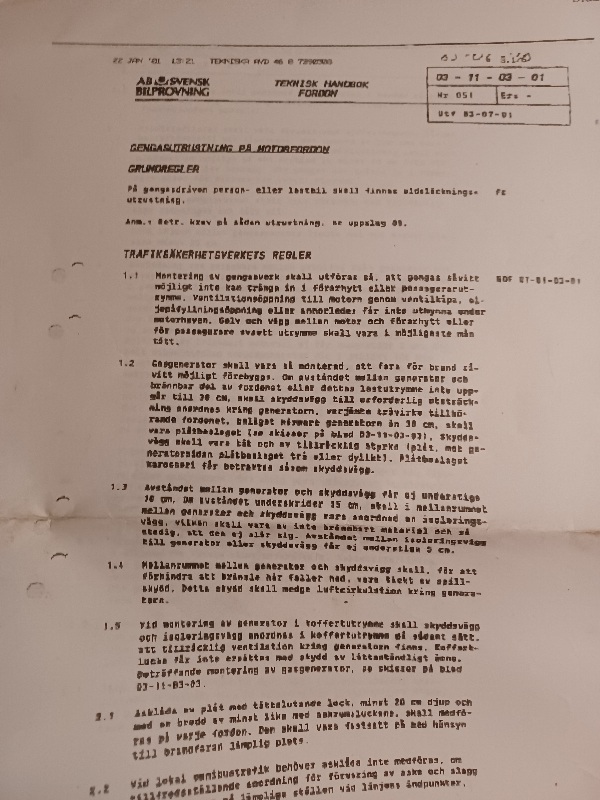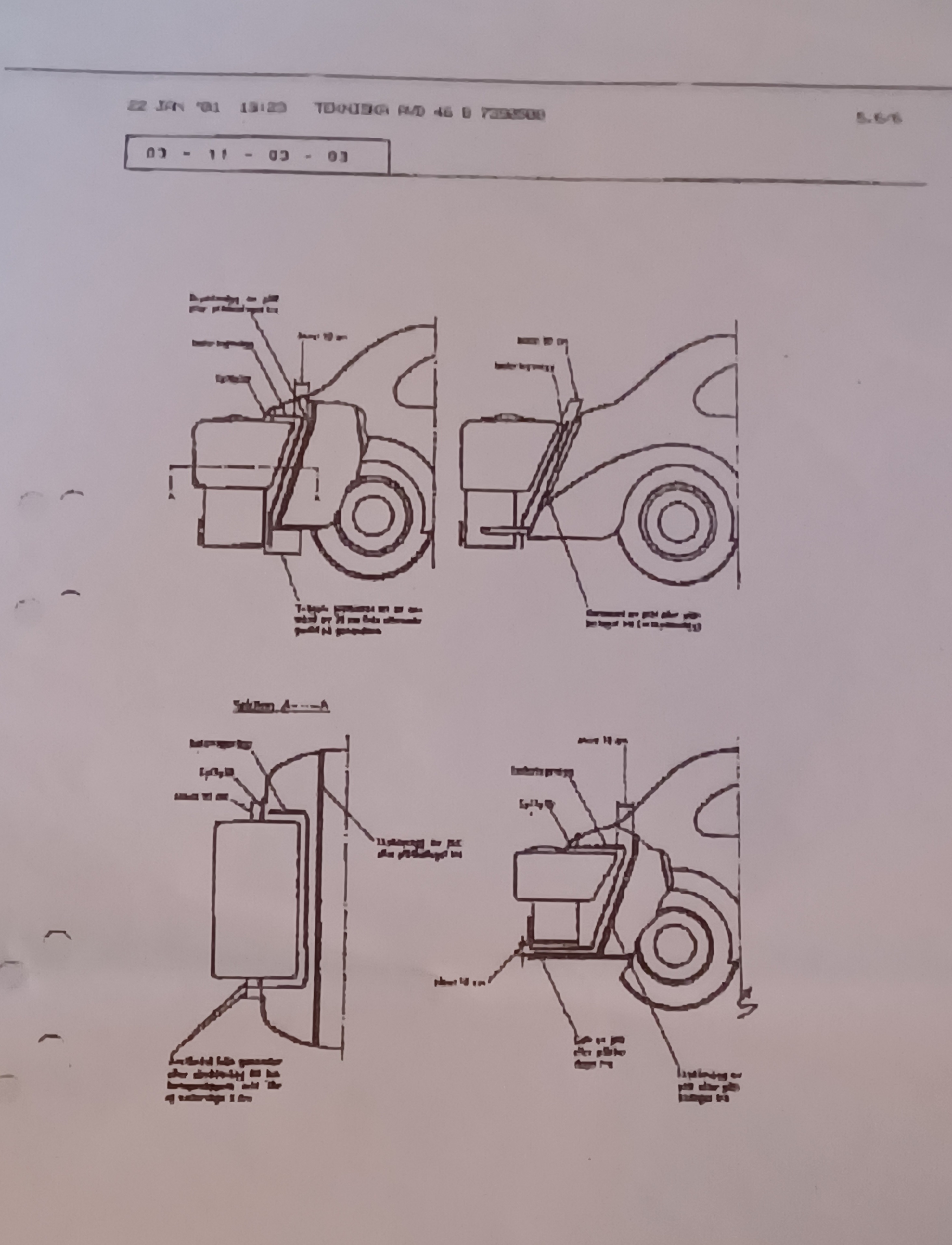Hi, here im going to post some regulations that was used by Swedish vehicle inspections.
This was old regulations from 1940-41, revised when oil crisises made woodgas an interesting alternative, I think this was revised 1953, 1974, 1984?, this is the last from 22 of january 2001, when ALL regulations was revised.
This comes from Swedish vehicle inspection services technical handbook-motorized vehicles.
I hope my translation is understandable.
Even if this are not current regulations, they could be taken as a good “rule of thumb” referring to avoiding risks of fire or carbon monoxide poisoning.
1.1
Mounting of gasifier should be made in that way that gas leaking into passenger compartment is avoided.
Open crankcase ventilation can NOT discharge into engine compartment, in that case it should be re-routed.
Floor and wall between engine; and passenger compartment should be as sealed up, as possible.
1.2
Gasifier and equipment should be mounted in a way that risk of fire is avoided.
If distance between gasifier and combustible part of vehicle is less than 16 inch, an insulating wall should be mounted.
Wooden parts of vehicle should be covered with a layer of sheet metal on side against gasifier.
1.3
Distance between gasifier and insulating wall could not be less than 4", if it’s less than 6", an heat shield should be mounted in between.
Distance between heat shield and gasifier; or insulating wall, could not be less than 2".
1.4
Gap between gasifier and heat shield or insulating wall should be covered with metal net, to avoid wooden fuel spill getting stuck in between, and to make air circulation possible.
1.5
When gasifier is mounted in trunk, or cargo space, sufficient air circulation should be allowed.
Trunk lid could NOT be replaced by a lid made of combustible material.
In my translation i have omitted some parts where text “repeats itself” (this is written in a very “bureaucratic” way)
There is more to come, this is just from first paper of six.










